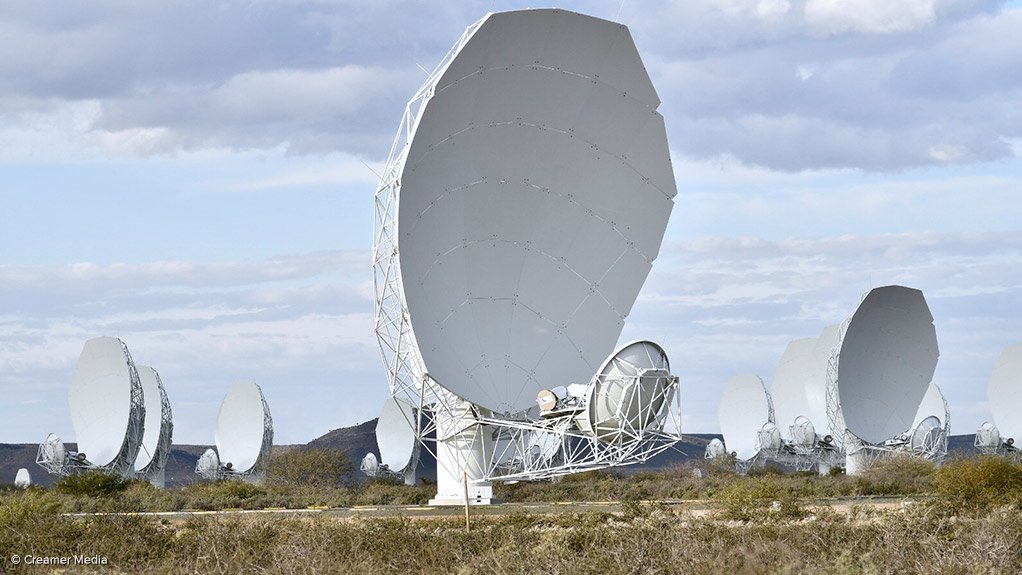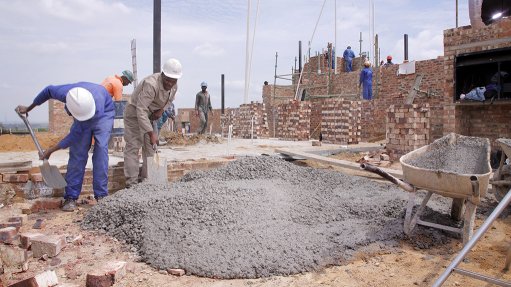MeerKAT telescope described as 'a quantum leap forward'
The launch of Ghana’s Kutunse radio telescope, as well as South Africa’s 64-dish MeerKAT telescope have been lauded as examples of what can be achieved when African countries work together in the interests of science and technology.
South African Science and Technology Minister Mmamoloko Kubayi-Ngubane on Tuesday described the July launch of the MeerKAT telescope as "a quantum step forward for innovation and science". She added that the prospects of the Square Kilometre Array (SKA), for which the MeerKAT is a precursor, were extremely exciting.
“SKA will be the most powerful radio telescope every built. It will succeed the Hubble telescope by a factor of 50 times.”
The Minister further commended Ghana for becoming the first SKA partner country to transform complicated redundant antennae into a successful telescope. The Kutunse telescope was launched in Ghana in August 2017 and has carried out its first light observations.
“Ghana was the first SKA/African Very Long Baseline Interferometry Network (AVN) African partner country to complete the conversion of a redundant communications antenna into a functioning radio telescope. Since its launch, the 32 m antenna has successfully demonstrated that it can operate as a single dish radio telescope and as part of a global very long baseline interferometry network,” explained Kubayi-Ngubane.
The achievements were cited during the annual meeting in Cape Town of SKA partner countries, which brought together science and technology ministers and senior officials from South Africa, Kenya, Madagascar, Zambia, Ghana, Botswana, Namibia, Mozambique and Mauritius. Ministers from all partner countries have signed a memorandum of understanding to collaborate in radio astronomy.
The discussion at the fifth SKA/AVN African Ministerial Forum focused on the advances in the SKA, AVN and other radio astronomy programmes.
The completion of the critical design reviews for SKA Phase 1 are scheduled to conclude in 2019. Construction of the SKA is set to begin in 2021 and conclude in 2026.
The AVN project, a network of radio telescopes in African partner countries linked to a global network, aims to also ensure that Africa has a network of scientific instruments devoted to progress.
“The world is at the cusp of a major technological shift in which data plays a huge role. Radio astronomy generates large quantities of data. We are able to develop advanced computing instruments to process the data and support broad research application. This will place our countries at the centre of the next industrial revolution,” said the Minister.
The AVN capacity programme is set to increase the number of recipients and training opportunities in SKA countries, with 136 beneficiaries in SKA partner countries.
The project is also preparing member countries for hosting the SKA remote stations, which will be implemented in Phase 2 of the project.
Kubayi-Ngubane called on Ministers to keep up the momentum for astronomy on the continent and to use the skills well.
“We must commit to ensuring that science and technology initiatives in our continent become a success. As Africans, we can no longer stand by as other continents reap the rewards of scientific advancements.”
South African Radio Astronomy Observatory (SARAO) MD Dr Rob Adam, meanwhile, said the observatory's astronomy projects had helped in a range of training and skills programmes, from those for electricians and boiler makers to investing in schools infrastructure for maths and science teachers. He said bursaries for schoolchildren in the town of Canarvon went beyond giving back to the community.
“Having a more skilled community is highly beneficial to us, as they will help us to operate and maintain the telescope in to the future.”
SARAO had also invested in the training of students. Bursaries had been awarded to many South African students. A total of 12% of bursars come from partner countries, notably Madagascar.
Centre for High Performance Computing (CHPC) head Happy Sithole added that new high-performance computing systems would be delivered to partner countries. Research was also going well. There are 29 research programmes at the CHPC in total spread across member countries and in fields ranging from materials science and chemistry to climate.
Comments
Announcements
What's On
Subscribe to improve your user experience...
Option 1 (equivalent of R125 a month):
Receive a weekly copy of Creamer Media's Engineering News & Mining Weekly magazine
(print copy for those in South Africa and e-magazine for those outside of South Africa)
Receive daily email newsletters
Access to full search results
Access archive of magazine back copies
Access to Projects in Progress
Access to ONE Research Report of your choice in PDF format
Option 2 (equivalent of R375 a month):
All benefits from Option 1
PLUS
Access to Creamer Media's Research Channel Africa for ALL Research Reports, in PDF format, on various industrial and mining sectors
including Electricity; Water; Energy Transition; Hydrogen; Roads, Rail and Ports; Coal; Gold; Platinum; Battery Metals; etc.
Already a subscriber?
Forgotten your password?
Receive weekly copy of Creamer Media's Engineering News & Mining Weekly magazine (print copy for those in South Africa and e-magazine for those outside of South Africa)
➕
Recieve daily email newsletters
➕
Access to full search results
➕
Access archive of magazine back copies
➕
Access to Projects in Progress
➕
Access to ONE Research Report of your choice in PDF format
RESEARCH CHANNEL AFRICA
R4500 (equivalent of R375 a month)
SUBSCRIBEAll benefits from Option 1
➕
Access to Creamer Media's Research Channel Africa for ALL Research Reports on various industrial and mining sectors, in PDF format, including on:
Electricity
➕
Water
➕
Energy Transition
➕
Hydrogen
➕
Roads, Rail and Ports
➕
Coal
➕
Gold
➕
Platinum
➕
Battery Metals
➕
etc.
Receive all benefits from Option 1 or Option 2 delivered to numerous people at your company
➕
Multiple User names and Passwords for simultaneous log-ins
➕
Intranet integration access to all in your organisation





















